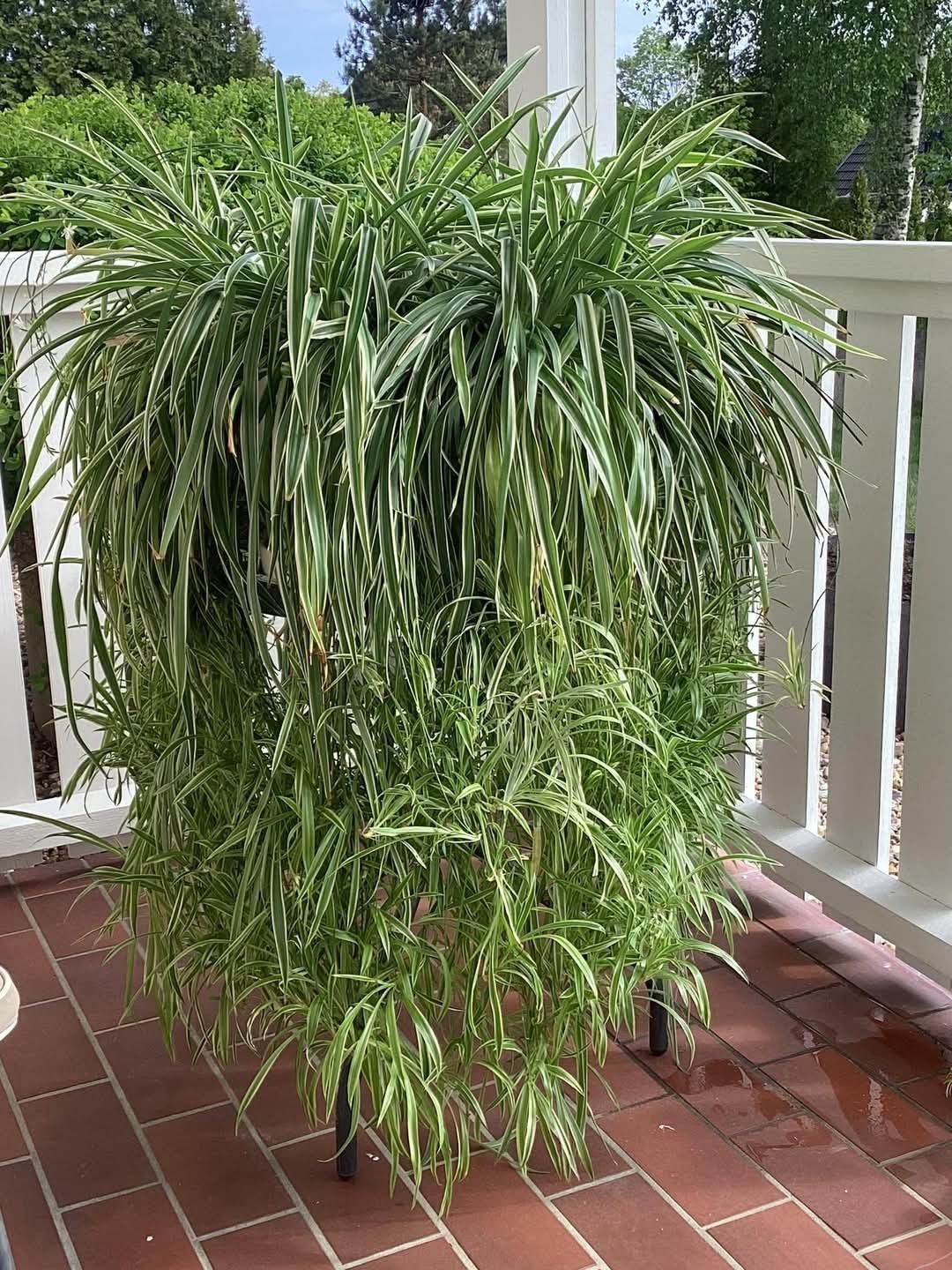Spider plants ( Chlorophytum comosum) are one of the easiest and most rewarding houseplants to grow. Their cascading green and white-striped leaves and adorable “babies” make them a favorite for beginners and seasoned plant lovers alike.Non-toxic houseplant
Over the years, I’ve experimented with different techniques to grow my spider plants into lush, sprawling masterpieces.
Let me share with you the tricks I’ve learned to ensure your spider plants thrive and grow to their full potential.
1. Pick the Right Spot
Indoor plant decor ideas
Spider plants are remarkably adaptable, but if you want them to grow big and healthy, proper lighting is key. They thrive in bright, indirect sunlight.
Too much direct sun can scorch their leaves, while too little light can cause them to grow slowly and lose their vibrant variegation.
I keep my spider plants near east-facing windows where they get gentle morning sunlight. If you don’t have a bright spot, don’t worry—they can also do well under fluorescent lighting, which makes them great for offices.
2. Sip Some Caffeine
Coffee grounds can act as a mild fertilizer, providing nitrogen and other nutrients that boost leaf growth. The grounds also improve soil drainage and deter pests like fungus gnats.Non-toxic houseplant
To use coffee grounds, let them dry out completely, then sprinkle a thin layer over the soil. Alternatively, you can mix used coffee grounds with water to create a gentle “coffee tea” and pour it onto the soil every few weeks.
3. Choose the Perfect Pot and Soil
Spider plants like a little room to spread out, but not too much. I always choose a pot with good drainage holes to prevent waterlogging, which can lead to root rot.Non-toxic houseplant
As for soil, a well-draining mix works best. I usually combine regular potting soil with a handful of perlite or sand to improve aeration.
4. Water Wisely
One of the biggest mistakes people make with spider plants is overwatering. These plants store water in their fleshy roots, so they don’t need to be watered too frequently. I always let the top inch of soil dry out before giving my plants a good soak.Non-toxic houseplant
During the growing season (spring and summer), I water them about once a week, but in the cooler months, I cut back to every two to three weeks.
see next page
ADVERTISEMENT

